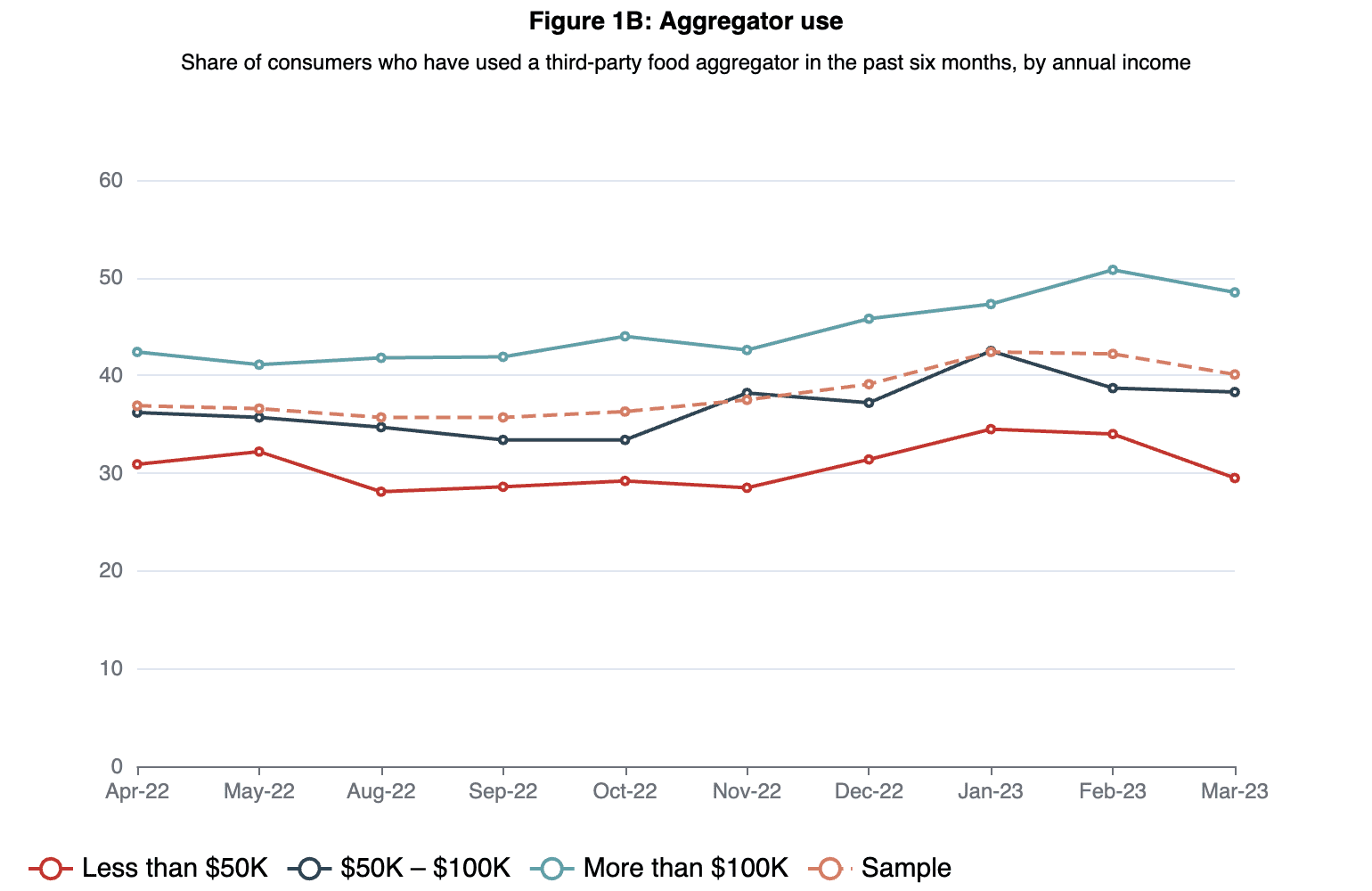
High earners may be ordering restaurant delivery more often, but others are remaining relatively constant.
Data from PYMNTS’ new exclusive report “Connected Dining: Third-Party Restaurant Aggregators Keep the Young and Affluent Engaged,” which draws from a survey of nearly 2,300 U.S. consumers conducted in March, finds that, over the course of the last year, aggregator adoption among those who make more than $100,000 a year rose significantly. The share of these high earners who reported having used a third-party food aggregator in the past six months increased from 42.4% to 48.5%.
In contrast, consumers in other income groups’ usage remained relatively constant. Among those who make between $50,000 and $100,000, the share grew only slightly from 36.2% to 38.3%. Meanwhile, among low-income consumers — those who make less than $50,000 a year — it actually decreased by a small amount from 30.9% to 29.5%.
With prices on the rise, many budget-strapped consumers have found it difficult to justify the added cost of ordering food for delivery.
Just Eat Takeaway.com, for instance, reported in a presentation shared with analysts April 19 that multinational restaurant delivery aggregator saw orders fall by 14% year over year in the first quarter of 2023, and the following day, United Kingdom-based food delivery service Deliveroo shared in its first quarter financial report April 20 that orders fell by 7 million year over year, down to 72 million from 79 million.
Earlier this year, the latter spoke to this trend on an earnings call.
“We have seen slightly lower retention of existing customers in ’22, but then towards the last quarter of ’22, we’ve seen positive signs that that decline and engagement has stabilized,” Deliveroo CEO Will Shu said. “It’s definitely the less-affluent customers that are, for obvious reasons, less engaged with the platform than they were previously. There’s a pretty stark difference between some of the less-affluent customers and some of the mid-affluent and the greater-affluent customers on frequency.”
